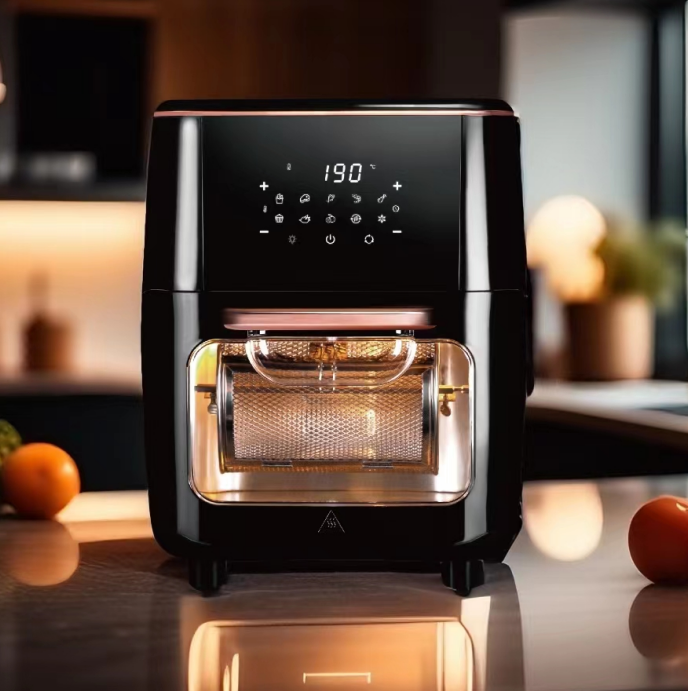In air fryer ovens, the cooking time and temperature control work together to produce the desired results. Here's an explanation of how they function and some tips for achieving the best outcomes:
Cooking Time and Temperature Control:
1.Temperature Control: Air fryer ovens typically have adjustable temperature settings that range from around 180°F to 400°F (80°C to 200°C). The heating element inside the appliance generates intense heat, and the temperature control allows users to set the desired level for their specific recipes.
2.Cooking Time Control: Users can set the cooking time based on the specific requirements of their recipes. The cooking process in an air fryer oven is relatively quick due to the efficient air circulation system. The timer function ensures that the appliance shuts off automatically when the set time elapses.
Tips for Achieving the Best Results:
1.Preheat the Air Fryer: Preheating serves a crucial purpose in preparing the air fryer oven for optimal cooking conditions. It allows the internal components to reach the specified temperature, ensuring that food is subjected to the intended cooking environment from the start.
Preheat the air fryer for a minimum of 5 minutes to guarantee that the entire cooking chamber is uniformly heated. This preliminary step is essential for achieving consistent and desirable results, especially when working with diverse recipes.
2.Use the Right Temperature: Temperature control is the linchpin of air fryer cooking. Each recipe demands a specific temperature range to trigger the Maillard reaction, promote caramelization, and achieve the desired texture and flavor.
Conduct thorough research on optimal temperatures for various ingredients and dishes. Pay attention to nuances, such as lower temperatures for delicate pastries and higher temperatures for crispier textures in proteins.
3.Monitor Cooking Time: Precision in timing is paramount to avoid culinary mishaps. The timer function ensures that the cooking process concludes precisely when planned, preventing overcooking or undercooking.
Regularly monitor the cooking progress and conduct visual checks slightly before the stipulated time. This proactive approach accommodates the uniqueness of each recipe, ensuring that your culinary creations are consistently impeccable.
4.Consider Food Size and Thickness: The size and thickness of ingredients influence the rate at which they cook. Smaller or thinner items may cook swiftly, requiring adjustments to prevent uneven outcomes.
Tailor your cooking approach based on the dimensions of each ingredient. Adjust the cooking time to accommodate variations, guaranteeing that each element receives the optimal cooking duration for uniform excellence.
5.Shake or Flip During Cooking: Mid-cooking repositioning of food items is a strategic maneuver to promote even browning and texture development. This step prevents one side from being exposed to direct heat for an extended period.
Execute the shaking or flipping process with finesse, using utensils suitable for the task. This technique is pivotal for achieving a harmonious blend of textures and flavors, especially in dishes with multiple components.
6.Avoid Overcrowding: Overcrowding the cooking chamber impedes the even distribution of hot air, leading to uneven results. Proper spacing facilitates optimal air circulation, ensuring a consistent cooking environment.
Embrace a patient approach by cooking in smaller batches. This meticulous method ensures that each piece of food receives undivided attention from the circulating air, resulting in a symphony of flavors and textures.
AIR OVEN

AIR OVEN



 English
English 中文简体
中文简体 English
English 中文简体
中文简体
















